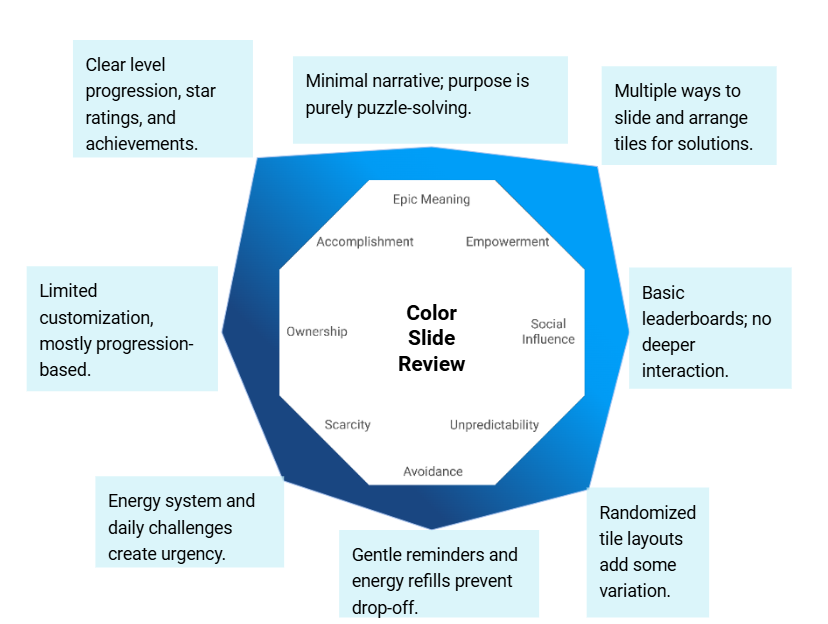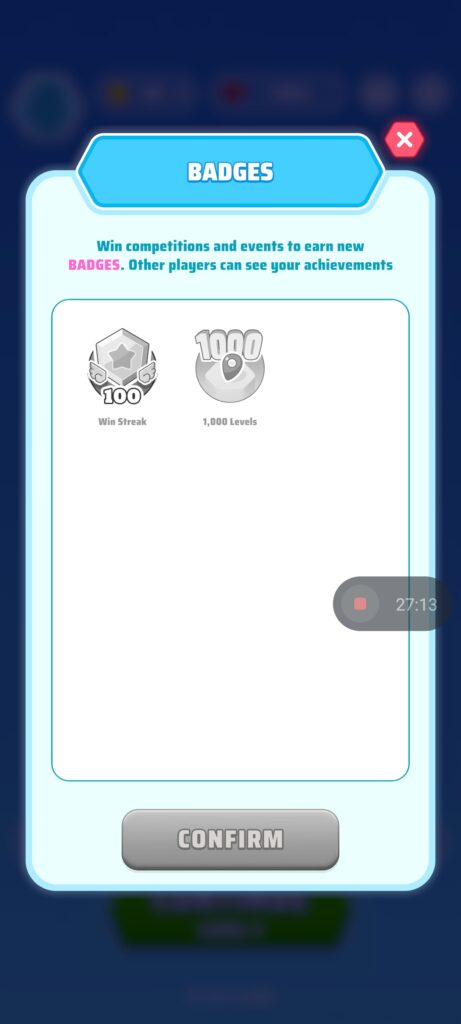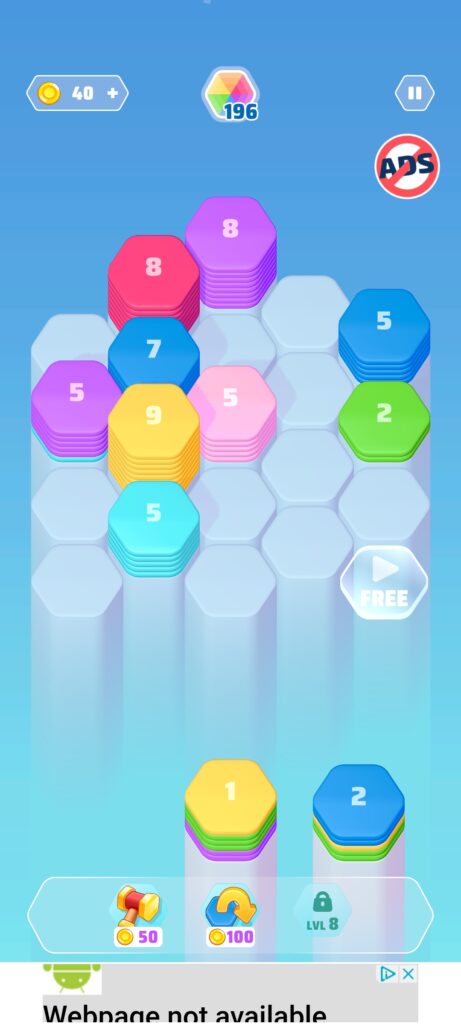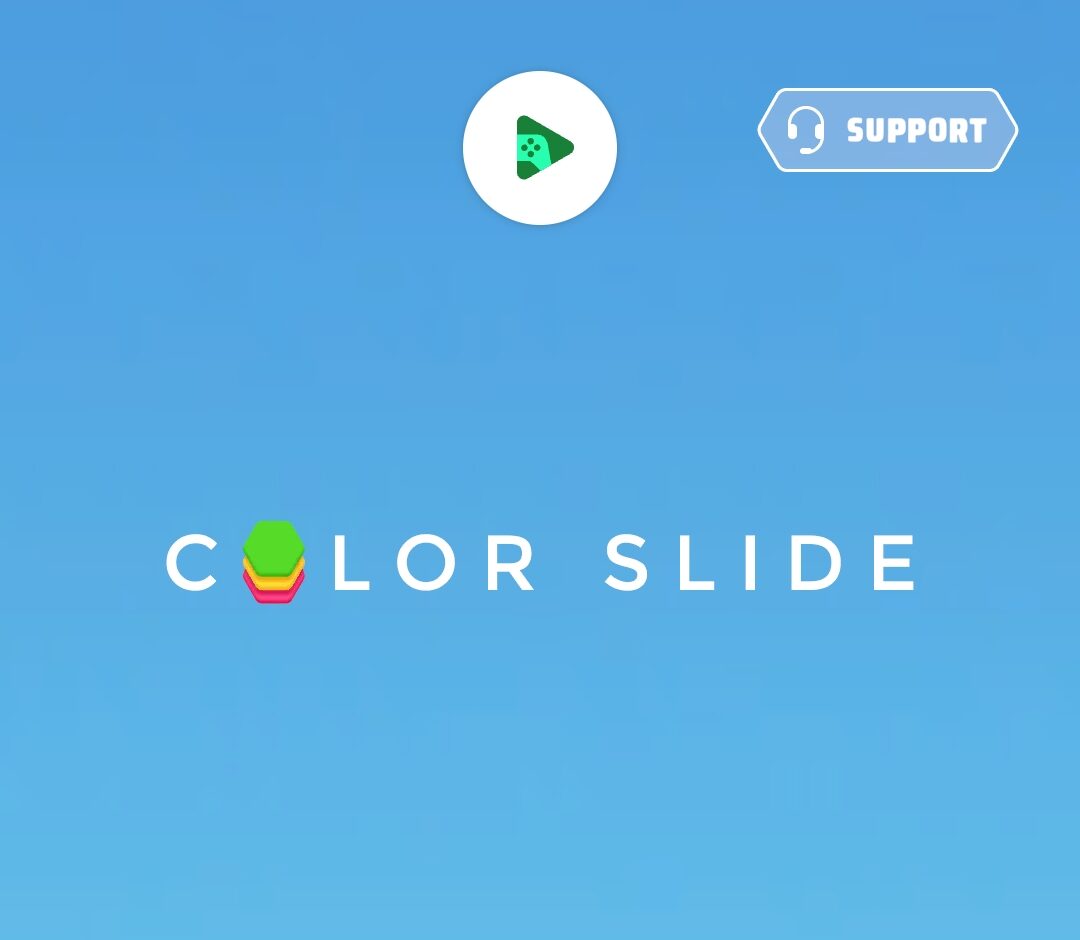Color Slide is a hyper-casual puzzle game available on Google Play that has quickly risen in the charts thanks to its minimal design and satisfying mechanics. At first glance, it looks like a simple color-matching title, but sliding tiles into place with increasing complexity quickly becomes more engaging than expected.
Octalysis Rating Table
| Core Drive | Score (1–10) | Evaluation Description |
|---|---|---|
| Meaning | 3 | Minimal narrative; purpose is purely puzzle-solving. |
| Accomplishment | 8 | Clear level progression, star ratings, and achievements. |
| Empowerment | 7 | Multiple ways to slide and arrange tiles for solutions. |
| Ownership | 5 | Limited customization, mostly progression-based. |
| Social Influence | 4 | Basic leaderboards; no deeper interaction. |
| Scarcity | 6 | Energy system and daily challenges create urgency. |
| Unpredictability | 5 | Randomized tile layouts add some variation. |
| Avoidance | 4 | Gentle reminders and energy refills prevent drop-off. |
GScore: 240
Evaluation Notes:
Scoring range: 1–10. Higher scores reflect stronger implementation of the core drive and greater player motivation.
GScore (Gamification Score): A metric derived from the Octalysis tool.
Octalysis Radar Chart

Detailed Analysis
1. Meaning (3/10)
Color Slide doesn’t aim for storytelling or a larger theme. Its sense of purpose is simply the satisfaction of sorting colors into place. While light on narrative, it aligns well with its hyper-casual design.
2. Accomplishment (8/10)
The game excels at giving players a sense of progress. Each level completion, star rating, and incremental difficulty bump makes your effort feel rewarding. For players who enjoy clearing stages and tracking improvement, this drive is the strongest.

3. Empowerment (7/10)
Sliding mechanics allow room for experimentation—there are often multiple valid solutions. The satisfaction comes from discovering the most efficient move order. Still, over time, the repetition reduces the sense of freedom.
4. Ownership (5/10)
Progression unlocks new stages and occasionally skins, but there’s little in terms of personalization. The collection aspect exists but is not a central part of the experience.
5. Social Influence (4/10)
Leaderboards encourage casual competition, but beyond that, there’s no guild system or cooperative play. Social motivation is present but remains shallow.
6. Scarcity (6/10)
An energy system restricts continuous play and nudges players to return later. Daily challenges and occasional timed events enhance the feeling of urgency without overwhelming the casual nature of the game.
7. Unpredictability (5/10)
Randomized puzzle layouts and varied starting positions bring some unpredictability, but once you understand the mechanics, surprises are limited. The game could benefit from more twists or rewards to keep curiosity high.

8. Avoidance (4/10)
The weakest drive. Small nudges like login rewards and energy systems lightly tap into the fear of missing out, but players rarely feel punished for stepping away. This contributes to a stress-free atmosphere, which suits the casual target audience.
Overall Summary & Recommendation
Color Slide’s Octalysis profile highlights Accomplishment and Empowerment as its strongest pillars, supported by light Scarcity mechanics. The game leans heavily on White Hat motivation—progress and mastery—while keeping stakes low.
For puzzle fans, Color Slide offers quick, satisfying bursts of gameplay perfect for short breaks. However, players looking for strong social features or deep unpredictability may find it less engaging in the long run.
Read More: https://us.09gamereview.com/blog/
Octalysis tool: https://yukaichou.com/octalysis-tool/


Leave a Reply